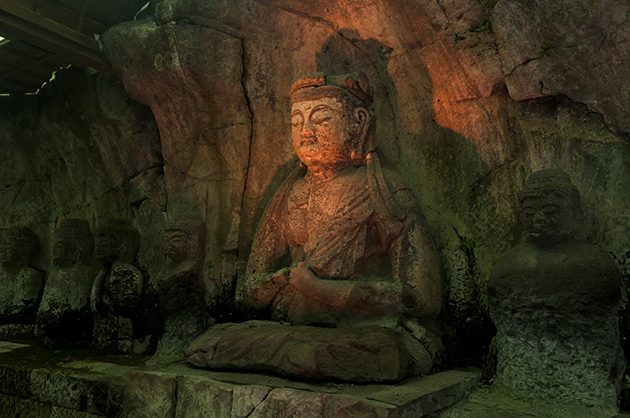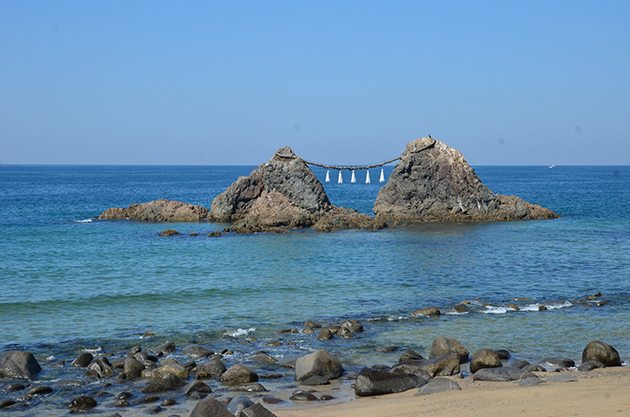The first steps on our tour of Kyushu takes in Oita and Miyazaki
Advertising Feature
The Seven Wonders of Kyushu: Part One
This island has three World Cup venues, myriad attractions across its seven prefectures and a host of matsuri festival events. Take a tour of Oita and Miyazaki…
For more travel information visit welcomekyushu.com/rugby2019
OITA
DAY TRIPS
Head to Beppu for a tour of the ‘hells’. These seven hot springs dating back more than 1,000 years are for viewing rather than bathing, with mud pools, geysers and ponds of different colours, including the red Chinoike and blue Umi Jigoku.
About 5km south of Usuki city centre, you’ll find the Sekibutsu (Stone Buddhas) carved into a cliff. There are four clusters of the buddhas, which are designated as national treasures, and it takes half an hour to walk the trail past all of them.
FESTIVAL SPIRIT
There are a number of festivals in Oita. The city of Kunisaki stages the Kebesu Matsuri on 14 October at the Kushiku Shrine. It’s a fire festival that involves two sides – ‘kebesu’ and ‘touba’ – competing with each other. The history of the festival remains a mystery but it involves a bright fire while performers wear white clothes and the ‘kebesu’ put on wooden masks.

Fired up: Festival action from the Kebesu Matsuri
Sake lovers should head to the Shirahigetawara Shrine in Kitsuki from 17-18 October for the Doburoku Festival, which has been running for 1,300 years.
Visitors will get to try doburoku, unfiltered sake that is white, thick and sweet, produced by some of the few breweries allowed to make it.
The Ontayaki Minto Festival runs from 12-13 October, where local potters sell their ceramics at reasonable prices.
The Ontayaki pottery village is known for its styled ceramics, with techniques passed down from fathers to sons for more than 300 years. Not only do you have a chance to shop but also to admire the Japanese countryside.
POST-MATCH
Downtown in the major cities is the place to be. In Oita try Funai-machi, Chuo-machi and Miyako-machi, in Beppu head to the Kitahama area, in Nakatsu visit Hinode-machi and in Saiki go to Umaimon Street. If you’re in Usa, try the Yokkaichi area and in Hita head to the Kuma area.
Enjoy Oita’s version of fish and chips – shiitake chips and fried yellowtail – or dango soup, a miso noodle soup topped with dumplings. Wash that down with a highball with kabosu citrus fruit. Then try Oita’s local sake and shochu.
WORLD CUP MATCHES
Wed 2 Oct – New Zealand v Canada
Sat 5 Oct – Australia v Uruguay
Wed 9 Oct – Wales v Fiji
Sat 19 Oct – QF Winner Pool C v Runner-up Pool D
Sun 20 Oct – QF Winner Pool D v Runner-up Pool C
FOR MORE ON KYUSHU…
The Seven Wonders of Kyushu: Part Two
The next part of our tour of Kyushu…
The Seven Wonders of Kyushu: Part Three
The final stops on our tour of Kyushu…
MIYAZAKI

Cliff top: Umagase in Hyuga
DAY TRIPS
The old town of Mimitsu is known for its antiquated charm and the glimpse it gives you into pre-modern Japan. In fact, it has been designated an Important Preservation District.
In Hyuga’s Nippo-Kaigan Quasi National Park you’ll find Umagase – a 70m-high cliff that has cracked into hexagonal columns. The top of it offers an unobstructed view of the Pacific Ocean and nearby you’ll find the Sea Cross, where the water has worn away the rocks into the shape of a cross. It is said that praying there will make your wishes come true.
If you want to try local alcohol, take a tour in Nobeoka, a city that is home to three famous breweries know collectivelyas Mitsukura. There’s a sake brewery (Sentoku), a shochu distillery (Sato) and a craft beer factory (Hideji). If you’re part of a group, you can also partake of local cuisine as part of your tour.
FESTIVAL SPIRIT
Miyazaki Jingu Festival (26-27 October) is the biggest festival in Miyazaki Prefecture and features a 4km-long float parade from Miyazaki Jingu to Otabidokoro, as well as a yabusame performance – Japanese archery performed on horseback.

Full bloom: Cosmos flowers in Ikoma
From the Azuchi-Momoyama to the Edo Period, Tenkaichi was the title given to those who made Noh masks. Noh is a traditional Japanese theatre art. There are 30 different masks made by the hands of the Tenkaichi in Nobeoka and you can see them being used in Noh performances on the outdoor stage in the Nobeoka Castle Park on 12 October.
At the Ikoma Highland Cosmos Festival in October, the flowers covering the plateau at the foot of the Kirishima mountains are illuminated by 20,000 candles at night and then there is a fireworks display.







